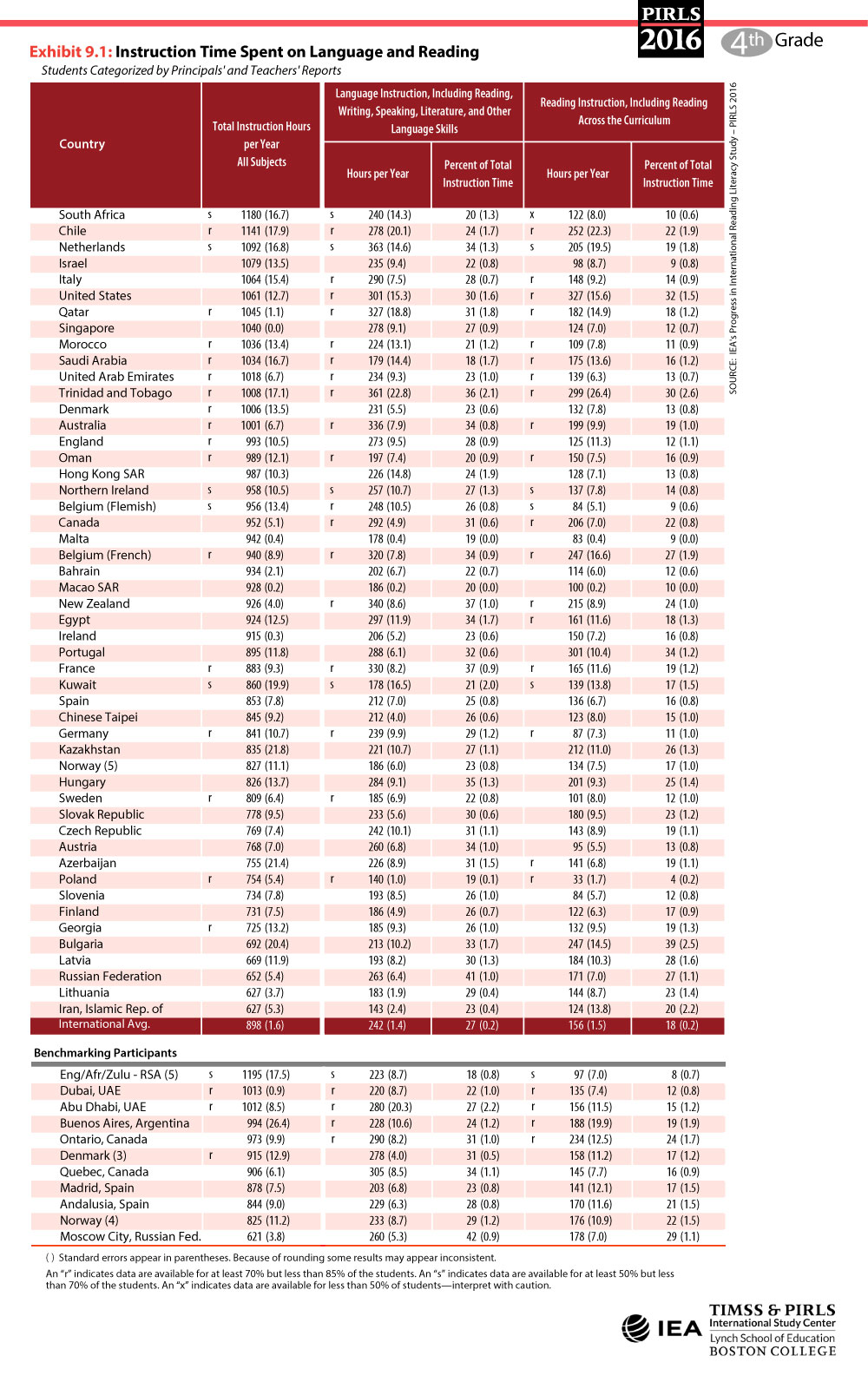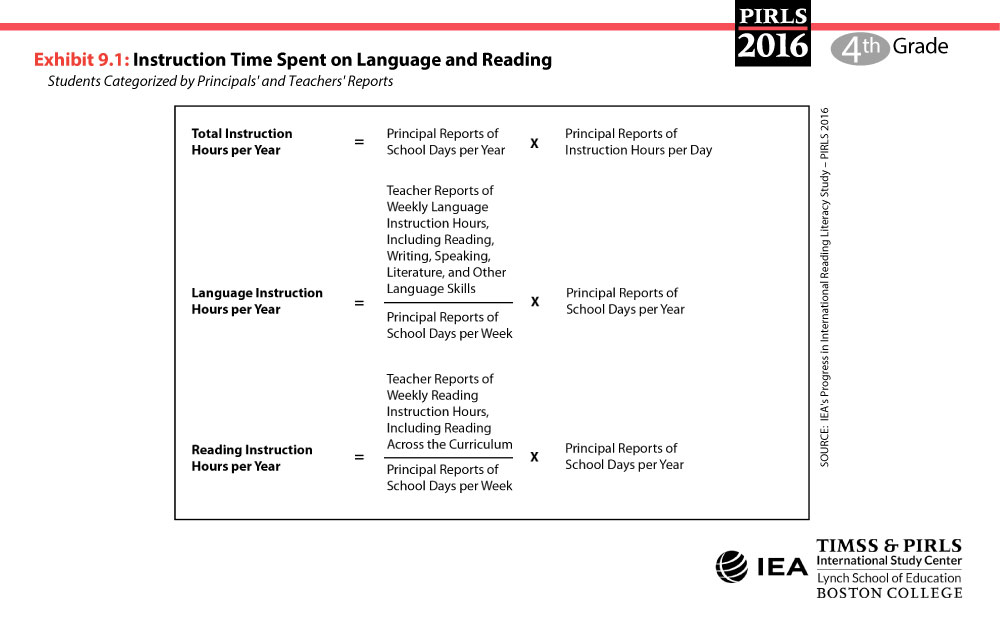A wide variety of factors influence the relationship between amount of instructional time and student achievement, primarily the quality of the instruction and the students’ readiness to learn. Nevertheless, instructional time remains a crucial component in considering students’ opportunity to learn.
Exhibit 9.1 presents principals’ and teachers’ reports about the instructional hours per year spent on language and reading instruction. The principals provided the number of school days per year and the number of instructional hours per day, and the teachers provided the weekly number of hours of language and reading instruction. The results for the time spent were based on a series of calculations as explained in “About the Measure.” On average, the fourth grade students in PIRLS 2016 received 898 hours per year of instruction across all subjects. On average, 27 percent of that instructional time was devoted to language instruction, including reading, writing, speaking, literature, and other language skills, which averaged to 242 hours of instruction per year, while 18 percent of the total instructional time was devoted to reading, including reading instruction across the curriculum, which averaged to 156 hours per year. As might be anticipated, these estimates vary somewhat from the levels of instructional time set as a matter of policy.


